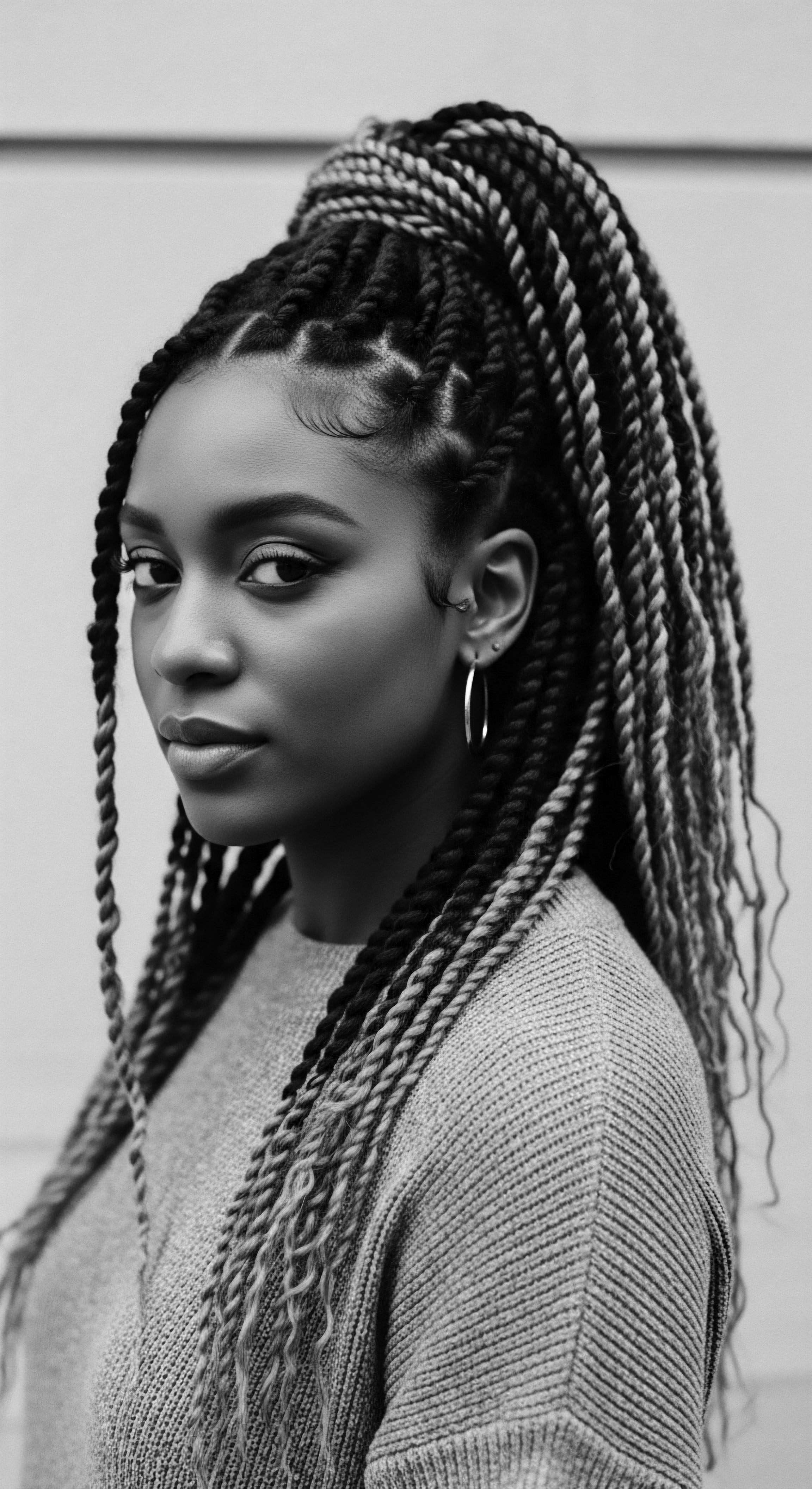
Roots
Step with us now into a deep lineage, a journey that begins not in recent memory, but in the elemental whisper of the very first strands that graced human forms. We speak of textured hair, a crown of coils, curls, and waves, whose story is inextricably bound to the heritage of humanity itself, particularly within Black and mixed-race communities. For generations uncounted, this living fiber has been more than a mere biological covering; it has served as a profound declaration, a silent language, a sacred marker of identity, echoing the deepest currents of ancestral wisdom and cultural resilience. This is a story of connection, of self, and of shared legacy.

What Does Textured Hair Reveal About Ancient Societies?
Before the tides of colonialism dramatically altered narratives, textured hair in African societies held an unparalleled significance. It was a visual vocabulary, an intricate system of communication woven directly onto the scalp. One could often discern a person’s age, their marital status, the community to which they belonged, their spiritual devotion, and even their position within the social structure, simply by observing their hair.
For instance, archaeological discoveries from ancient North Africa, specifically rock art found in southeastern Algeria, reveal depictions of women wearing cornrows dating back thousands of years. This artistry was not coincidental; it conveyed a complex societal framework.
Textured hair, beyond its biological form, served as a living archive of identity and communal belonging across ancient African societies.
The practice of hair styling, thus, was a communal rite, often entrusted to close relatives or respected practitioners. This was not a casual act; it was a ritual steeped in meaning, for the hair was considered the body’s most elevated point, a conduit for spiritual energy and a connection to the divine realm. The reverence accorded to hair meant that its care was a sacred trust, a practice passed down through oral histories and kin-led apprenticeship, reinforcing familial bonds and collective memory.

How Did Hair Anatomy Influence Cultural Practices?
Understanding the unique anatomical characteristics of textured hair provides a deeper appreciation for the ancestral care practices that evolved alongside it. Unlike straight hair, which generally grows in a circular follicle, textured hair emerges from an elliptical or oval-shaped follicle. This distinctive shape causes the hair shaft to curl as it grows, forming a spectrum of patterns from gentle waves to tight coils.
The internal structure, with its irregular distribution of keratin, contributes to its natural elasticity and resilience, yet also its predisposition to dryness and tangling. Traditional methods of cleansing, conditioning, and styling were, therefore, born from an intuitive understanding of these very characteristics.
Ancient communities learned to work with, rather than against, the hair’s natural inclinations. They sourced ingredients from their local environments—botanicals, clays, and oils—to provide nourishment and protection, ensuring the vitality of each strand. This foundational knowledge, born from centuries of observation and communal practice, mirrors modern scientific understanding of hair biology, affirming the enduring wisdom of our forebears. It highlights how the very biology of textured hair informed the creation of a rich care heritage.
For example, the Himba people in Namibia traditionally used a mixture of ground ochre, butterfat, and sometimes aromatic resins to coat their hair and skin. This practice, known as Otjize, not only provided sun protection and cleanliness but also signified age, marital status, and a profound connection to the earth and their ancestors.
- Follicle Shape ❉ The elliptical or oval shape influences the curl pattern, creating diverse textures.
- Cuticle Layer ❉ Textured hair often has a more raised cuticle, contributing to its unique sheen and moisture retention needs.
- Moisture Balance ❉ The structure of textured hair naturally makes it prone to dryness, necessitating ancestral practices focused on oiling and conditioning.
- Elasticity and Strength ❉ Despite its delicate appearance, textured hair possesses a distinct elasticity that allows for complex styling, a property understood and utilized by ancient artisans.

What Was The Original Lexicon Of Textured Hair?
The language used to describe textured hair in ancient contexts was intrinsically linked to its cultural and social meanings, reflecting reverence rather than reduction. Terms were not merely classificatory; they were descriptive of pattern, symbolic of status, or indicative of ritual. While modern classifications (like Type 3, Type 4) are relatively new scientific constructs, the ancestral lexicon spoke of hair as an integral component of a person’s identity and their place within the collective.
For instance, in West African societies, the specific patterns woven into hair could identify whether someone hailed from the Wolof, Mende, or Ashanti communities. Each style carried a unique signature.
| Cultural Context Ancient Egyptian Nobility |
| Hair as a Signifier Elaborate wigs and braids |
| Associated Meaning/Heritage Wealth, religious devotion, divine connection |
| Cultural Context Yoruba People (Nigeria) |
| Hair as a Signifier Intricate styles (e.g. Irun Kiko) |
| Associated Meaning/Heritage Community roles, femininity, marital status, spiritual energy |
| Cultural Context Himba Tribe (Namibia) |
| Hair as a Signifier Dreadlocked styles coated with red ochre (otjize) |
| Associated Meaning/Heritage Connection to earth, ancestral ties, life stages (age, marriage) |
| Cultural Context Massa (East Africa) |
| Hair as a Signifier Hair shaving/re-growing rites |
| Associated Meaning/Heritage Life transitions, re-affirmation of spiritual connection |
| Cultural Context These varied traditions showcase the deep, personalized connections to textured hair across diverse ancestral landscapes. |
This historical understanding of hair nomenclature reminds us that the meaning of hair is culturally constructed, moving beyond mere aesthetics to embody deeper social and spiritual truths. It reveals how the descriptive language of hair was always, at its core, a language of identity and belonging.
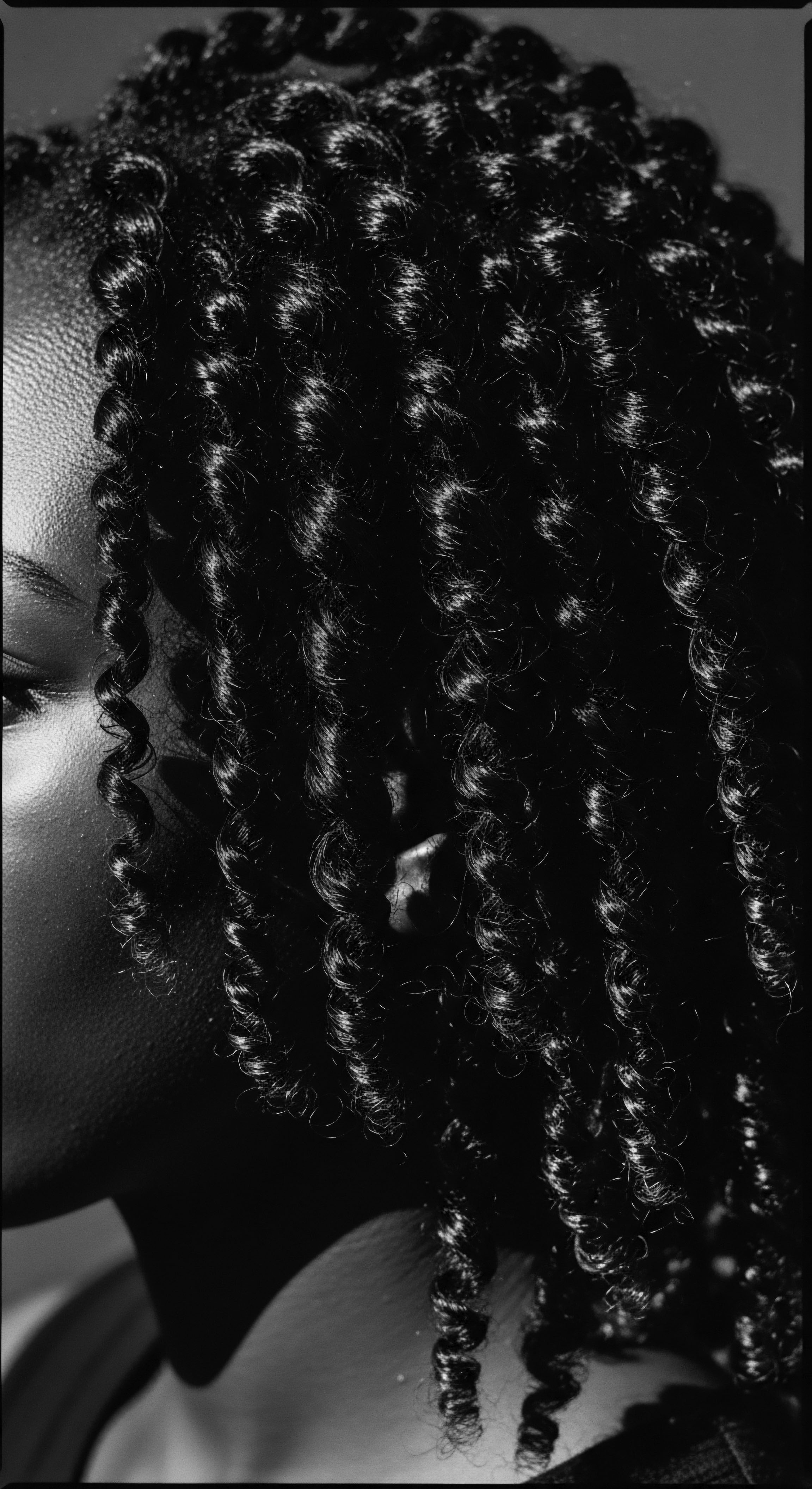
Ritual
The care and styling of textured hair has always transcended mere adornment; it is a profound practice steeped in ritual, a living heritage passed from hand to knowing hand. Within the expansive story of Black and mixed-race communities, these acts of styling are imbued with layers of meaning, from daily acts of self-preservation to potent symbols of collective resistance and celebration. This heritage tells a tale of ingenuity, adaptability, and unwavering spirit, particularly when examining how textured hair became a repository of cultural knowledge and a tool for survival.

How Did Styling Techniques Function as Covert Communication?
During the brutal era of the transatlantic slave trade and the subsequent periods of chattel slavery, where identities were forcefully stripped and cultural practices suppressed, textured hair assumed an extraordinary new role. It became a silent, yet powerfully expressive, canvas for resistance. Enslaved Africans, robbed of their languages and personal belongings, found ingenious ways to preserve their heritage and communicate vital information. Specific braiding patterns, often disguised within common styles, served as intricate maps or signals.
Across the diaspora, hairstyling became a clandestine language, allowing the sharing of vital information under the very gaze of oppression.
One compelling example, often recounted through oral histories in Afro-Colombian communities, speaks to the revolutionary use of cornrows. In the early 17th century, in what became Palenque De San Basilio, the first free village in the Americas established by Maroons (escaped enslaved people) led by Benkos Biohó, women used their hair to communicate escape routes. Braids could delineate the contours of a path through dense foliage, point towards water sources, or indicate safe houses along a journey to freedom. Certain hairstyles, such as “departes”—thick braids tied into buns atop the head—reportedly signaled plans to escape.
Beyond mapping, these tightly woven styles also served as clandestine storage for precious resources ❉ rice grains, seeds for future cultivation, or small gold nuggets stolen while working in mines, all carried discreetly beneath the visible surface of the hair. This practice speaks to an extraordinary level of resourcefulness and defiance, a living testament to how heritage practices could directly aid survival.
- Cornrows as Cartography ❉ Specific patterns in cornrows could represent geographic features, like rivers or mountains, guiding escapees.
- Hidden Provisions ❉ Seeds, grains, and even gold could be secreted within tightly braided styles for sustenance or future survival.
- Signals of Intent ❉ Certain styles communicated readiness to escape or other coded messages among the enslaved community.
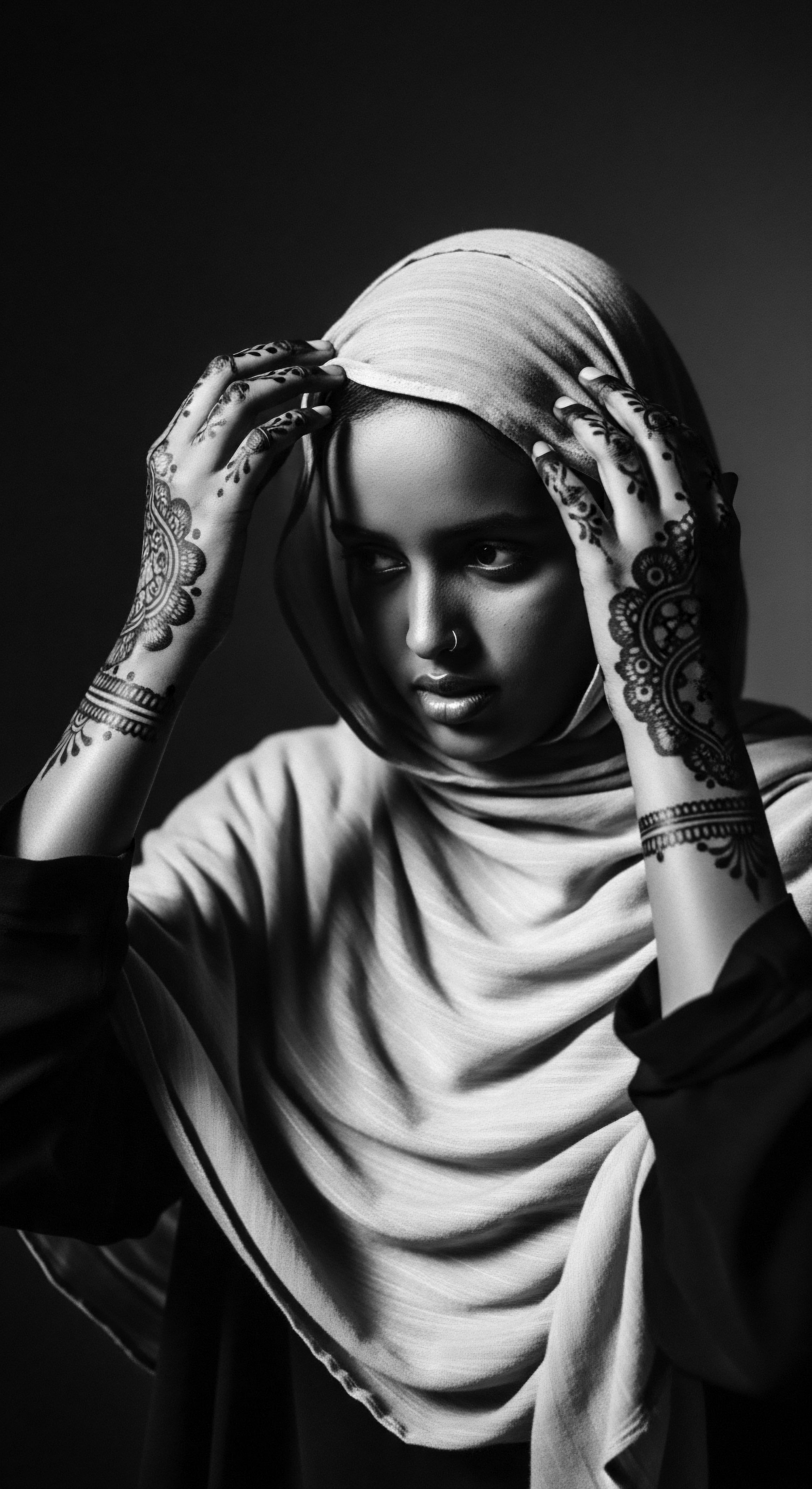
What Were the Ancestral Roots of Protective Styling?
Long before modern terminology, the concept of protective styling was deeply ingrained in ancestral hair care. These styles, which minimize manipulation and guard the hair strands, were born from practical necessity, aesthetic preferences, and a profound understanding of hair health in diverse climates and lifestyles. Braids, twists, and various forms of updos were not only beautiful but also functional, shielding the hair from environmental elements like sun and dust, reducing breakage, and aiding in cleanliness during periods of travel or labor. The intricate nature of many traditional styles meant they could last for weeks or even months, providing a low-maintenance solution for communities engaged in demanding agricultural work or nomadic existences.
The communal aspects of these styling sessions were equally significant. Hours spent braiding hair became a cherished space for storytelling, cultural transmission, and the strengthening of social bonds among women and girls. It was a time for sharing wisdom, for passing down oral histories, and for reinforcing the collective identity of the group. This social art transcended generations, embodying a living heritage where the act of styling was as meaningful as the resulting aesthetic.
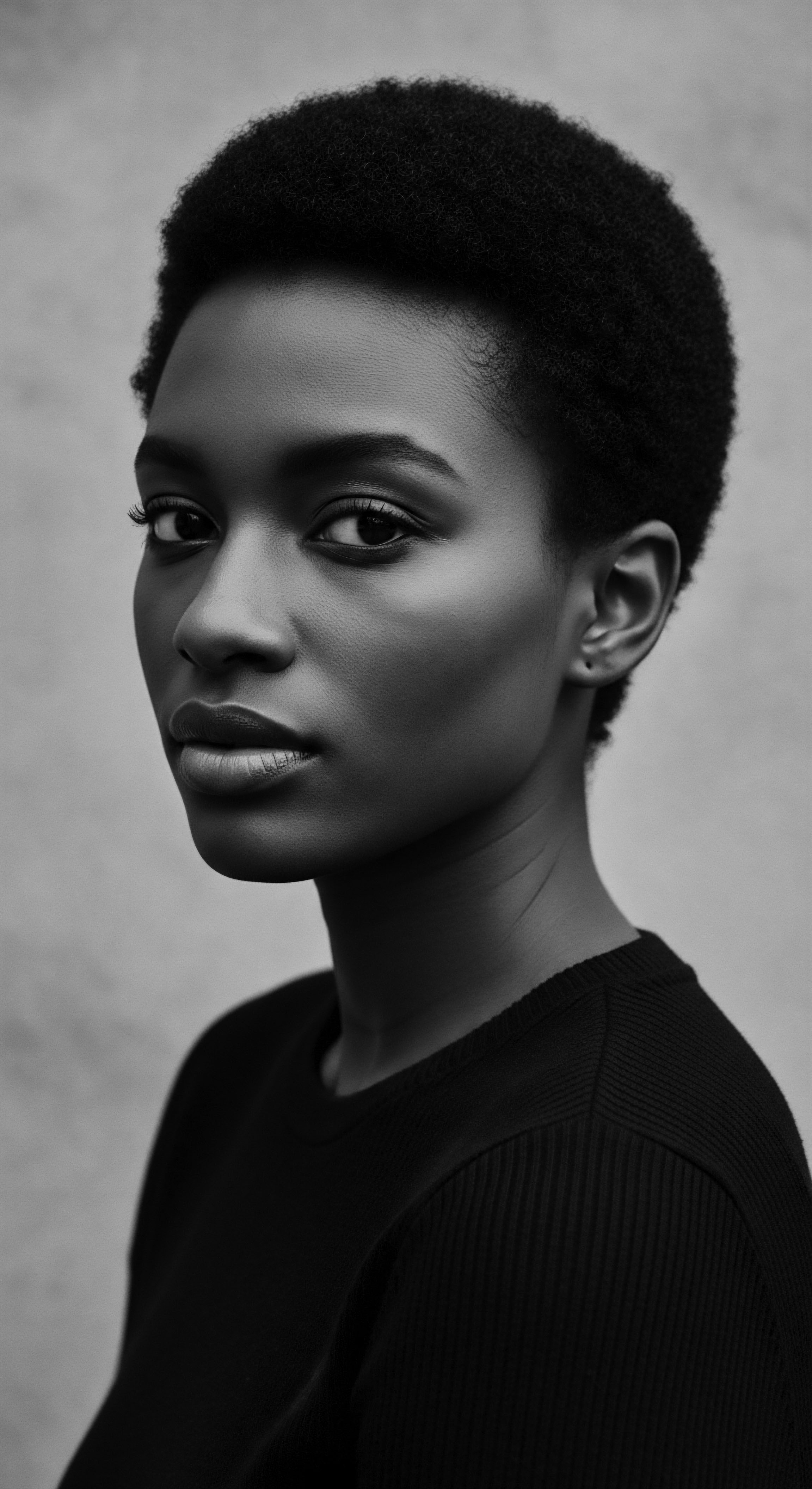
How Did Tools Reflect Heritage and Innovation?
The tools utilized in historical textured hair care were often extensions of the natural world, crafted with ingenuity from readily available materials. Combs and picks fashioned from wood, bone, or horn were common, each design meticulously considered for detangling and shaping unique curl patterns. These were not simply implements; they were often handcrafted artifacts, sometimes adorned with symbolic motifs, reflecting the artistry and cultural values of their creators. The use of natural fibers and elements also extended to hair adornments—beads, cowrie shells, and gold—which further elevated styles into declarations of social status, spiritual beliefs, or ceremonial readiness.
The resilience of these traditional tools and techniques is evident in their enduring presence within modern Black hair care. While materials have evolved, the fundamental principles of gentle manipulation, strategic sectioning, and protective styling remain deeply rooted in these ancestral innovations. It underscores a lineage of care that continually adapted and innovated, ensuring the vitality and expressive power of textured hair across continents and centuries.
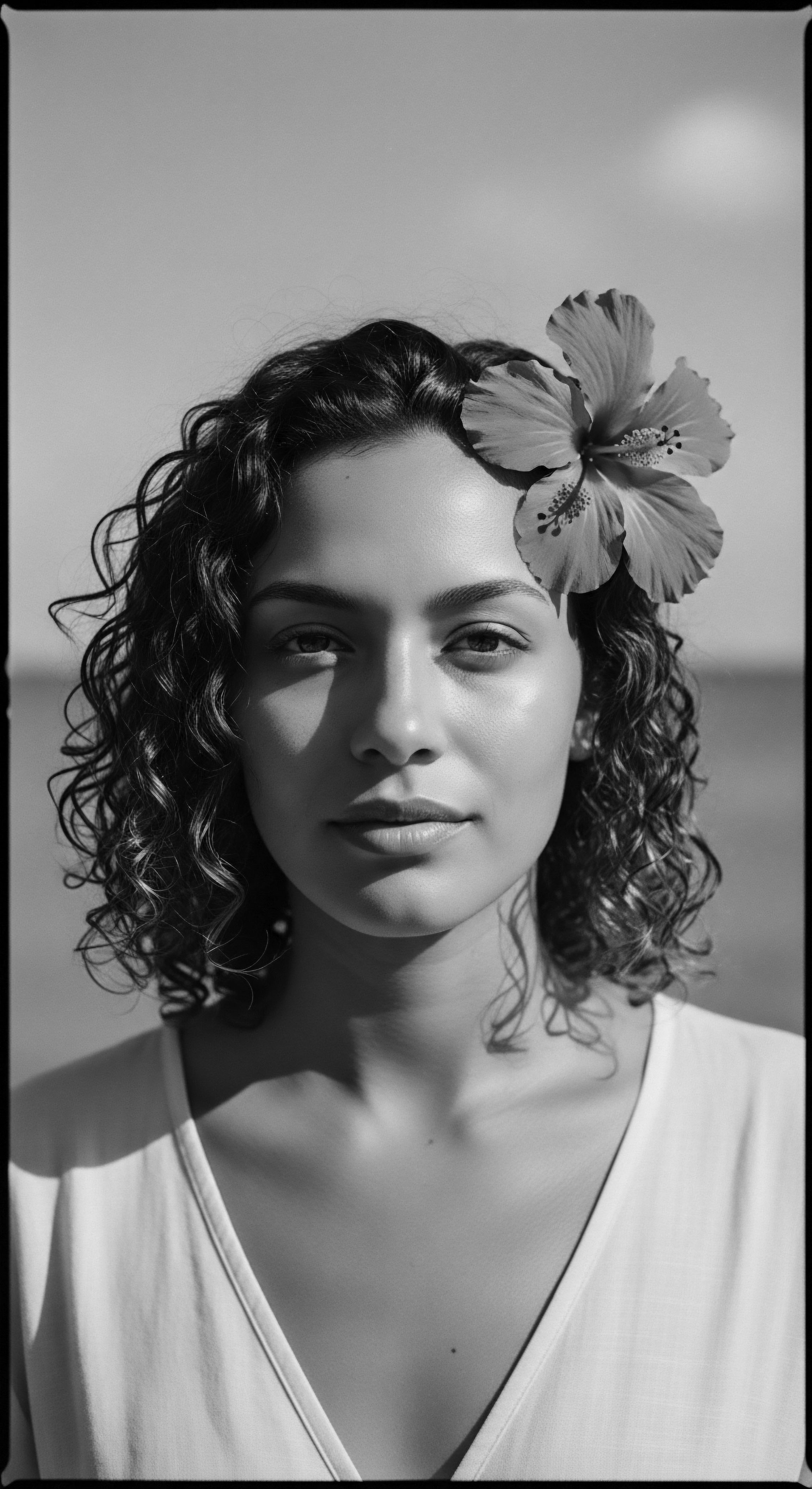
Relay
The story of textured hair is one of constant relay, a passing of wisdom and resilience across generations, adapting to shifting tides yet retaining its profound connection to heritage. From ancient spiritual conduits to modern symbols of affirmation, the expressive power of textured hair has persisted, particularly within Black and mixed-race experiences, serving as a dynamic testament to identity and ancestral continuity. To grasp its depth requires examining how its physical attributes became deeply intertwined with cultural narratives, both affirming and challenging.
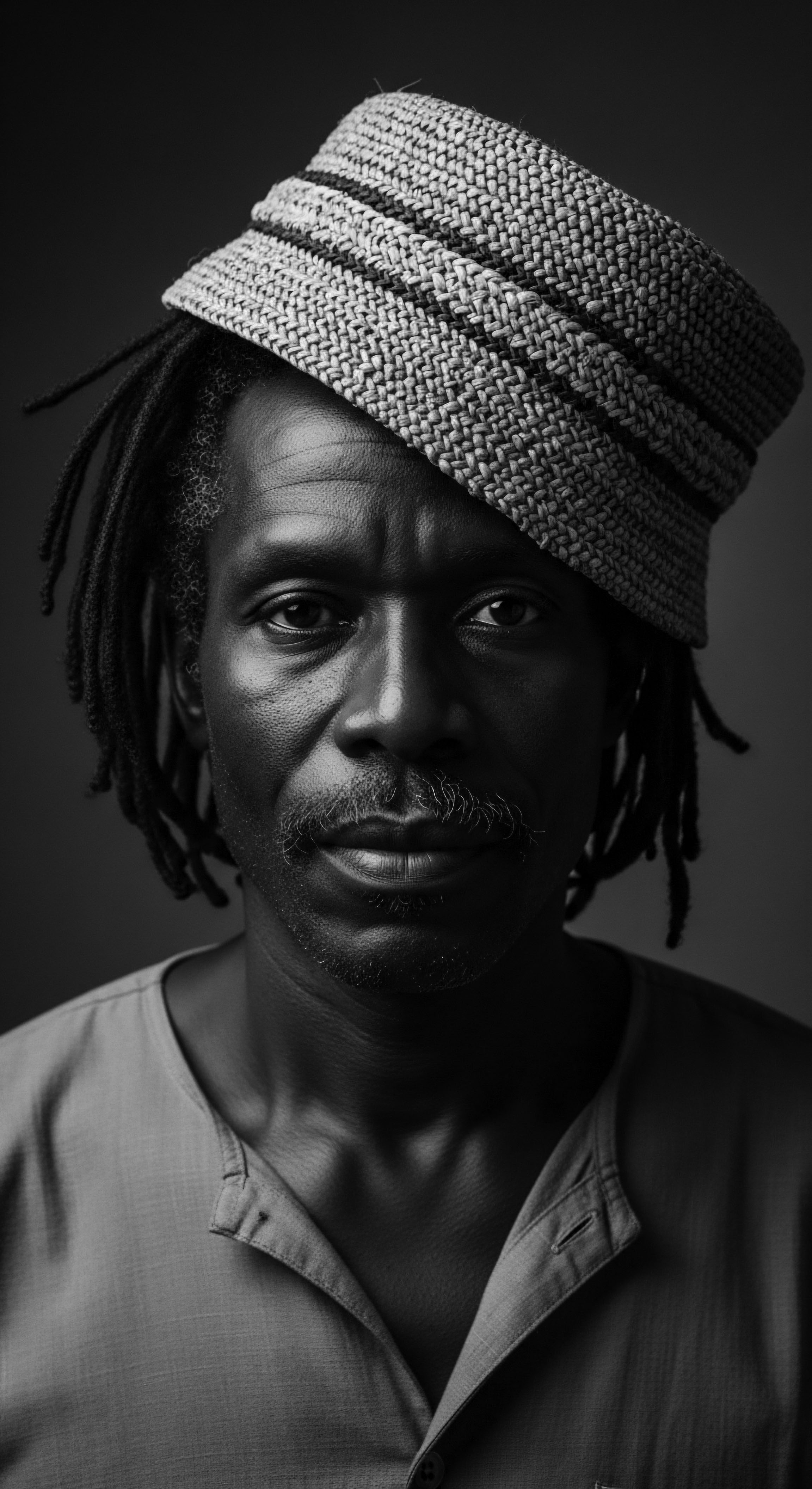
What Is the Biological Basis for Hair as a Heritage Marker?
The remarkable diversity of textured hair, from loose waves to tight coils, is a testament to genetic heritage, rooted in the evolutionary journey of humanity. The unique helical structure of the hair shaft, its varying degrees of curvature, and the specific distribution of disulfide bonds contribute to its distinct appearance and behavior. Scientifically, the very genetics that determine these curl patterns are often traceable to ancestral origins, linking individuals directly to their lineage. This elemental biology provides a tangible link to heritage, making the hair a visible biological marker of ancestry.
This connection becomes particularly resonant in diasporic communities, where the physical characteristics of hair serve as a persistent, undeniable link to a past that was often deliberately obscured. The understanding of textured hair’s genetic underpinnings allows us to appreciate the ingenuity of historical care practices, recognizing that ancestral traditions were, in effect, early forms of applied science, working with the hair’s inherent properties to maintain health and expressive capacity.

How Did Textured Hair Resist Cultural Erasure?
The historical trajectory of textured hair is undeniably shaped by periods of oppression and attempts at cultural erasure, particularly during slavery and colonialism. In these contexts, the deliberate shaving of hair by captors aimed to strip individuals of their identity and connection to their homelands. Yet, even in the face of such dehumanization, textured hair stood as a powerful, defiant symbol. Enslaved people and their descendants found covert and overt ways to maintain their hair traditions, transforming them into acts of quiet resistance and, eventually, bold assertion.
Textured hair persisted as a beacon of cultural preservation, often transforming into an instrument of resistance against oppressive forces.
The continuity of braiding techniques, passed down through oral tradition and practiced in secret, became a lifeline to a severed past. It was through these practices that cultural memories survived, fostering a collective identity and a sense of shared belonging amidst systematic attempts to dismantle it. The very act of caring for and styling textured hair became an affirmation of self, a refusal to relinquish one’s inherent worth and historical roots. This resilience speaks volumes about the enduring spirit and the deep cultural significance attached to hair within Black communities.

What Does Textured Hair Reveal About Ongoing Societal Dialogues?
Even in contemporary society, textured hair remains a site of ongoing cultural and political dialogue. The legacy of discriminatory beauty standards, deeply rooted in colonial attitudes that devalued African aesthetics, continues to manifest in various forms, from workplace bias to school policies. However, the modern natural hair movement represents a powerful reclamation of heritage and self-acceptance.
This movement, which gained significant momentum from the Black Power era of the 1960s and 70s with the rise of the Afro, is not merely a trend. It is a conscious decision by countless individuals to celebrate their inherent beauty, reject imposed standards, and actively connect with their ancestral legacy.
This widespread movement has stimulated a deeper academic and scientific interest in textured hair. Research in hair science now validates many traditional practices, bridging the gap between ancestral wisdom and contemporary understanding. For example, studies on the benefits of protective styling for moisture retention and length preservation echo the centuries-old practices of our forebears. The emphasis on gentle manipulation, scalp health, and the use of natural ingredients, so central to Roothea’s ethos, finds a solid basis in both historical practice and modern dermatological insights.
This synergy between past and present confirms that the journey of textured hair is a living, evolving narrative, continuously shaping and reflecting the broader societal conversation around identity, beauty, and belonging. It is a narrative that holds deep insight for everyone, regardless of their own hair’s unique story.

Reflection
As we draw this meditation to its close, the truth becomes ever clearer ❉ textured hair is not simply a biological marvel, nor merely a subject of fleeting fashion. It stands as a profound testament to a heritage that has navigated the currents of history, from the spiritual reverence of ancient African lands to the defiant acts of survival during the transatlantic crossing, and the powerful affirmations of identity in the modern era. Each curl, each coil, each wave carries within its very structure the echoes of ancestral resilience, a living narrative passed down through bloodlines and communal memory.
To truly understand textured hair is to gaze upon a living library, where the knowledge of countless generations is preserved. It is to recognize the enduring wisdom of those who, faced with the unimaginable, still found ways to communicate, to protect, and to declare their intrinsic worth through the meticulous care and styling of their hair. This heritage is not static; it breathes, it adapts, it continues to shape futures, reminding us that identity is a deeply rooted, vibrantly expressed, and ever-unfolding story, woven strand by precious strand.
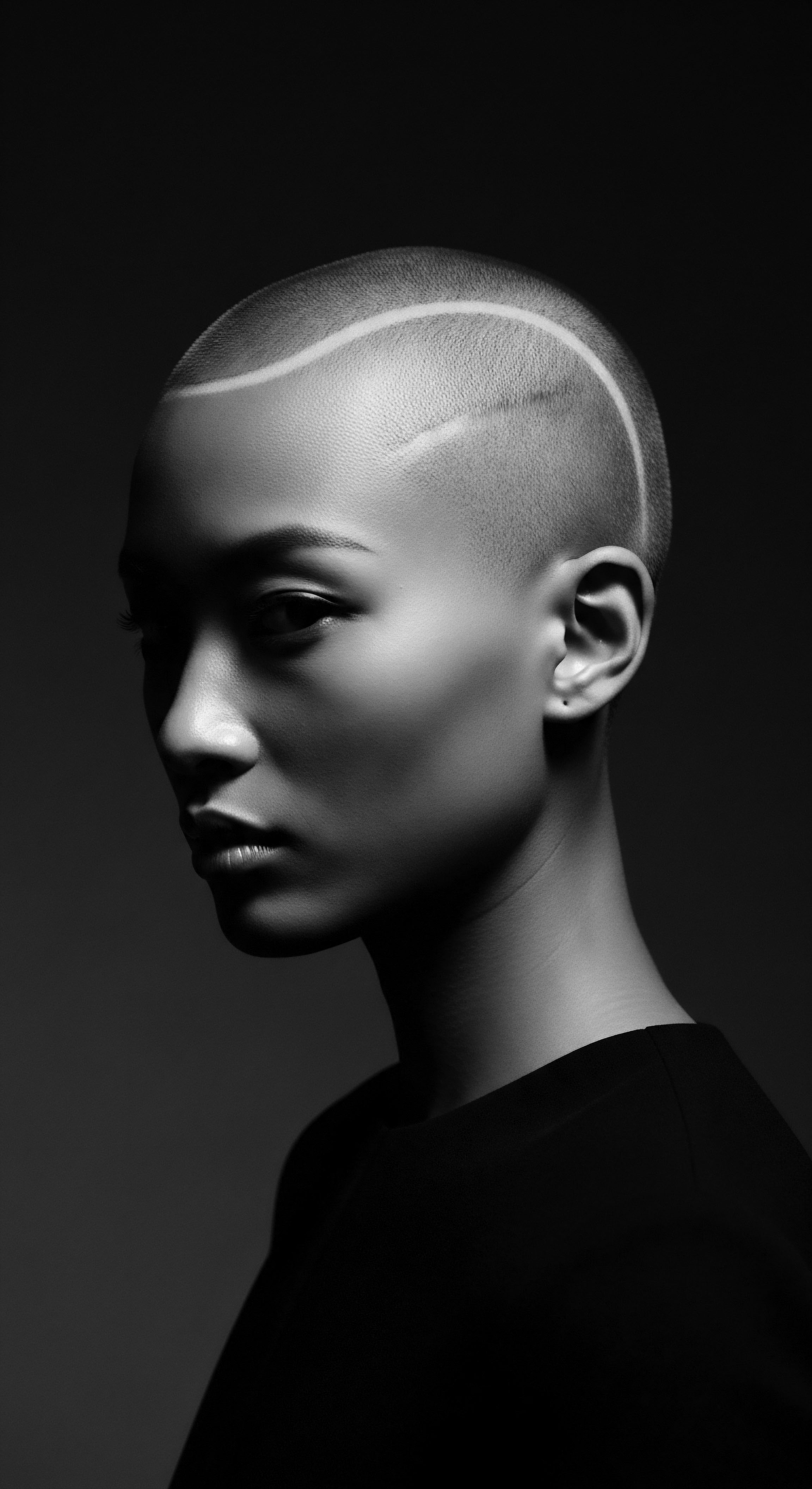
References
- Ancient Origins. (2022-11-30). African Slaves Used Braids to Communicate Escape Routes in Colombia.
- Bero, T. (2021-01-28). Tangled Roots ❉ Decoding the history of Black Hair. CBC Radio.
- Byrd, A. & Tharps, L. (2014). Hair Story ❉ Untangling the Roots of Black Hair in America. St. Martin’s Griffin.
- EdwardAsare. (2021-04-17). The Role of Hair in Ancient African Cultures.
- Genesis Career College. (N.D.). History of Braids ❉ More Than Just a Hairstyle.
- Odele Beauty. (2024-01-16). A History Lesson On Hair Braiding.
- Omotos, A. (2018). The “Dreaded” Colonial Legacy. Journal of Pan African Studies.
- PanaGenius TV. (2024-02-29). How cornrows were used as an escape map from slavery across South America. YouTube.
- Rose, S. (2020-04-05). How Enslaved Africans Braided Rice Seeds Into Their Hair & Changed the World.
- The Braid Gallery. (2025-02-27). The Legacy of Braids ❉ Black History Through the Art of Hair.
